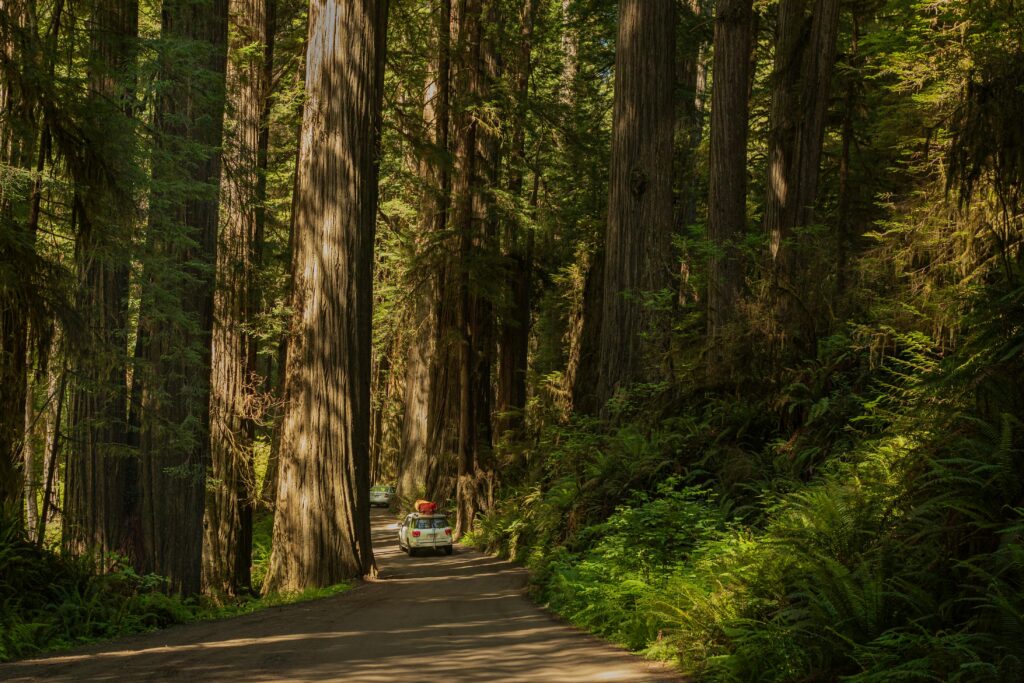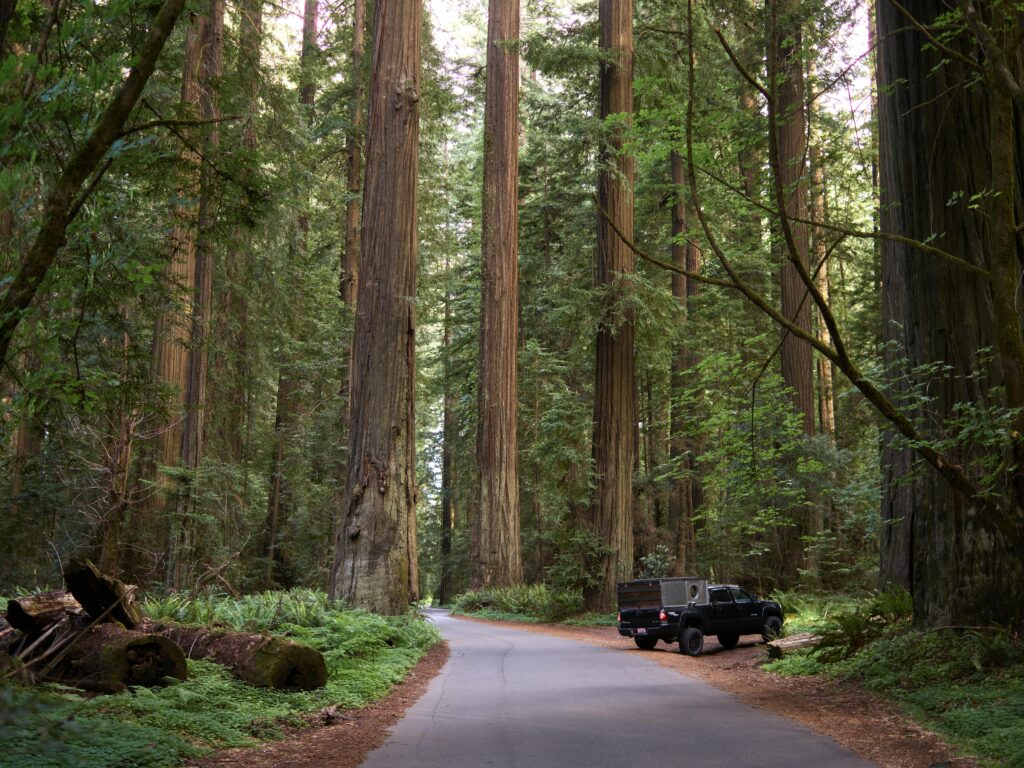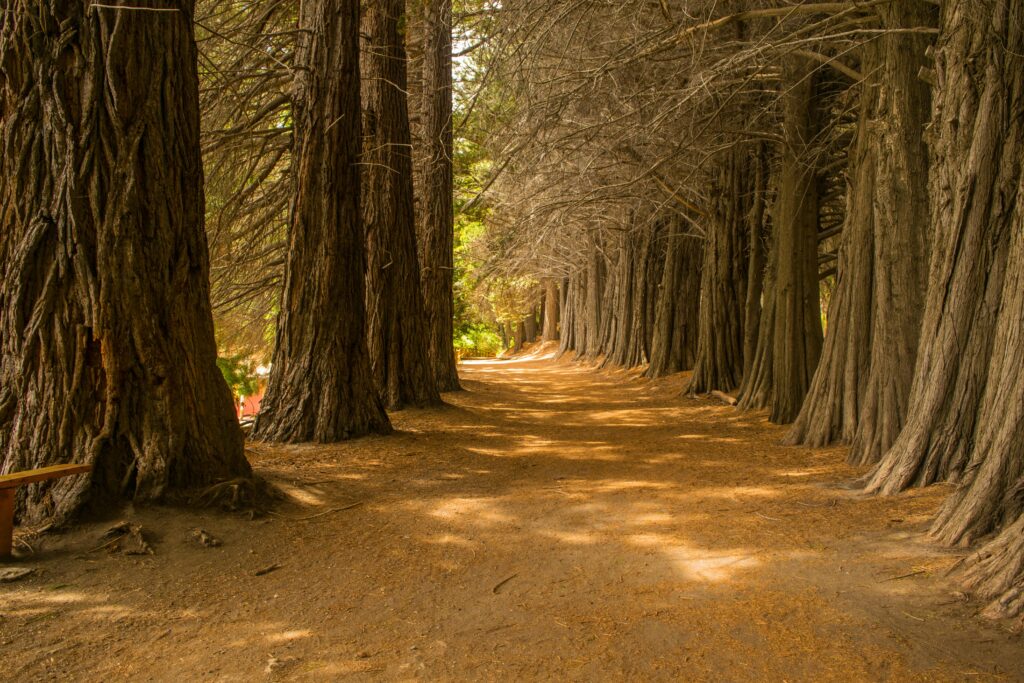The Redwood Forest, home to the world’s tallest trees, is a bucket-list destination that blends awe-inspiring nature with serene adventure. If you’re planning to travel to Redwood Forest, this guide will help you navigate California’s iconic redwood parks with ease. From transportation to must-see attractions, we’ll cover everything you need for an unforgettable trip.
This article incorporates supported keywords like Redwood Forest travel tips, California redwood parks, visiting redwood forests, and redwood national park guide to ensure you’re ready for a 2025 adventure.
Why Visit the Redwood Forest?
Spanning Northern California’s coast, the Redwood National and State Parks (RNSP) protect ancient coast redwoods, some reaching over 370 feet tall and living for 2,000 years. These giants, found in parks like Jedediah Smith, Del Norte Coast, and Prairie Creek, create a magical landscape straight out of a fairy tale.
A 2023 National Park Service report notes over 400,000 annual visitors, drawn to hiking trails, wildlife, and serene groves. Visiting redwood forests offers a chance to reconnect with nature and witness one of Earth’s natural wonders, making it a cornerstone of California redwood parks exploration.
Getting to the Redwood Forest
Understanding how to travel to Redwood Forest starts with choosing the right transportation. The region, located 260–330 miles north of San Francisco, is accessible by air, car, or bus.
By Air
The closest airports are:
- Del Norte County Airport (CEC) in Crescent City, 6 miles from RNSP, served by Contour Airlines with flights from Oakland. It’s ideal for quick access but has limited routes.
- Arcata-Eureka Airport (ACV) in McKinleyville, 40 miles south, with United and Avelo flights from San Francisco, Los Angeles, and Denver.
- San Francisco International (SFO) or Oakland (OAK), both 5–6 hours by car, are major hubs for international travelers.
From these airports, rent a car for flexibility, as public transport within the parks is limited.
By Car
Driving is the most popular way to reach California redwood parks. From San Francisco, take US-101 north (5–6 hours to Crescent City). The scenic Avenue of the Giants, a 31-mile stretch through Humboldt Redwoods State Park, is a must-drive, showcasing towering trees. Rent a car at SFO or OAK, and ensure it’s suitable for rural roads. A 2024 Lonely Planet guide recommends budgeting for gas, as the round trip from San Francisco can cost $100–150.
By Bus
Greyhound and Amtrak Thruway buses connect San Francisco to Arcata or Crescent City, taking 7–9 hours. From there, local shuttles like Redwood Coast Transit serve park areas, though schedules are limited. This option suits budget travelers but requires planning, as noted in a 2023 Tripadvisor forum.
Crafting Your Redwood National Park Guide
A 3–5 day itinerary maximizes your experience visiting redwood forests. Here’s a sample redwood national park guide:
- Day 1: Crescent City & Jedediah Smith Redwoods State Park: Explore Stout Grove, a serene redwood cluster, and hike the 0.6-mile Boy Scout Tree Trail.
- Day 2: Prairie Creek Redwoods State Park: Walk the Lady Bird Johnson Grove (1.4-mile loop) and spot elk in Elk Prairie. Don’t miss Fern Canyon, featured in Jurassic Park.
- Day 3: Del Norte Coast Redwoods State Park: Hike the Damnation Creek Trail (4 miles, strenuous) for ocean views and redwoods.
- Day 4: Humboldt Redwoods State Park: Drive the Avenue of the Giants and visit the Founder’s Grove to see the 346-foot Dyerville Giant (fallen).
- Day 5: Optional Activities: Kayak the Smith River or explore Crescent City’s Battery Point Lighthouse.
This itinerary balances hiking, scenic drives, and relaxation, covering key Redwood Forest travel tips.
Redwood Forest Travel Tips for 2025

Here are essential Redwood Forest travel tips to enhance your trip:
- Best Time to Visit: Spring (April–May) or fall (September–October) offer mild weather (50–70°F) and fewer crowds. Summer is busy, while winter brings heavy rain.
- Pack Smart: Bring waterproof hiking boots, rain gear, and layers, as coastal fog and rain are common. Include binoculars for wildlife like Roosevelt elk.
- Book Early: Reserve campsites or lodging in Crescent City, Arcata, or Eureka 6–12 months ahead, especially for summer, via recreation.gov or local hotels.
- Stay Connected: Cell service is spotty, so download offline maps like AllTrails or the NPS app for navigation.
- Respect Nature: Stick to trails to protect fragile ecosystems and avoid feeding wildlife, as emphasized by the National Park Service.
Top Attractions in Redwood National and State Parks
Visiting redwood forests means exploring iconic sites:
- Tall Trees Grove: Home to the 379-foot Hyperion, the world’s tallest tree (permit required for access).
- Fern Canyon: A lush, fern-lined canyon with a 1-mile loop trail, perfect for photography.
- Avenue of the Giants: A scenic drive with stops like the Immortal Tree, standing despite lightning and floods.
- Klamath River Overlook: Offers stunning coastal views and whale-watching opportunities (December–April).
- Enderts Beach: A quieter spot in Del Norte for tidepooling and sunset views.
These attractions make California redwood parks a must-see for nature lovers.
Safety and Practical Considerations
The Redwood Forest is generally safe, with a Level 1 U.S. State Department advisory in 2025, but precautions enhance your trip:
- Trail Safety: Stay on marked trails to avoid getting lost; trails like Damnation Creek are strenuous, so assess your fitness level.
- Weather Preparedness: Coastal fog and rain can reduce visibility, so check forecasts via NOAA and carry a flashlight.
- Wildlife Awareness: Keep a safe distance from elk and bears, and store food securely to avoid attracting animals.
- Cash and Connectivity: Some park areas don’t accept cards, so carry cash for small purchases or park fees ($35/vehicle for RNSP).
Overcoming Travel Challenges
Travel to Redwood Forest can present hurdles, but preparation helps:
- Limited Public Transport: Rent a car for flexibility, as buses are infrequent and don’t reach all trails.
- Crowded Trails: Visit early morning or midweek to avoid summer crowds at popular spots like Fern Canyon.
- Remote Access: Download offline maps, as cell service is unreliable in 80% of RNSP, per a 2024 NPS report.
Why Visit the Redwood Forest in 2025?

The Redwood Forest offers a rare chance to stand among Earth’s tallest living things, fostering awe and tranquility. California redwood parks blend adventure with serenity, from hiking ancient groves to kayaking pristine rivers. With sustainable tourism initiatives, like the NPS’s Leave No Trace program, visiting redwood forests supports conservation efforts.
In 2025, the parks’ accessibility and diverse activities make them ideal for families, solo travelers, or couples seeking nature’s grandeur.
Conclusion
So, how to travel to Redwood Forest? Fly into Crescent City (CEC), Arcata (ACV), or San Francisco (SFO), then drive or take a bus to explore California redwood parks. Craft a redwood national park guide with stops at Stout Grove, Fern Canyon, and the Avenue of the Giants, and follow Redwood Forest travel tips like packing for rain and booking early.
By planning carefully, you’ll immerse yourself in the majesty of visiting redwood forests, creating memories that last a lifetime. Start your 2025 redwood adventure today and step into nature’s cathedral!
FAQs About Traveling to Redwood National Forest
What airport do you fly into to see the Redwood National Forest?
The closest airports are Del Norte County Airport (CEC) in Crescent City, 6 miles from the park, or Arcata-Eureka Airport (ACV), 40 miles south, with San Francisco (SFO) as a major hub 5–6 hours away by car.
How do I get into Redwood Forest?
Drive via US-101 from San Francisco (5–6 hours) or fly into CEC or ACV and rent a car; limited bus services like Redwood Coast Transit connect Crescent City and Arcata to park entrances.
How much does it cost to go to Redwood National Forest?
Entry to Redwood National and State Parks is $35 per vehicle for a 7-day pass; camping fees range from $35–50 per night, and additional costs for gas, lodging, or tours vary by plan.
What is the best month to visit the Redwood Forest?
May or September are ideal, offering mild weather (50–70°F), fewer crowds, and less fog or rain compared to summer or winter, enhancing trail and scenic experiences.
How many days do I need for Redwood National Park?
Three to five days are sufficient to explore key areas like Stout Grove, Fern Canyon, and Avenue of the Giants, balancing hiking, scenic drives, and relaxation.
